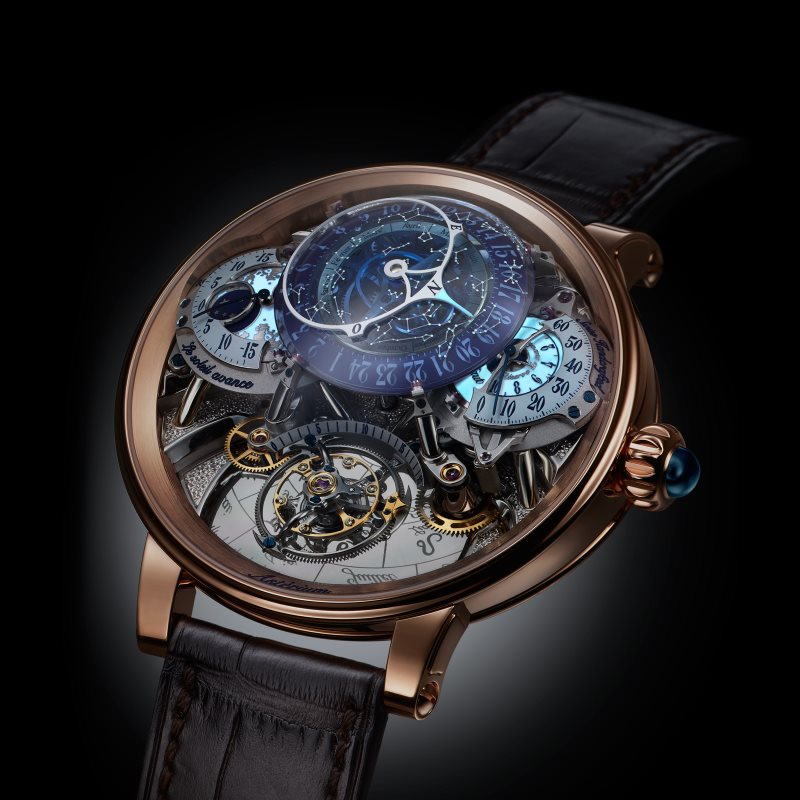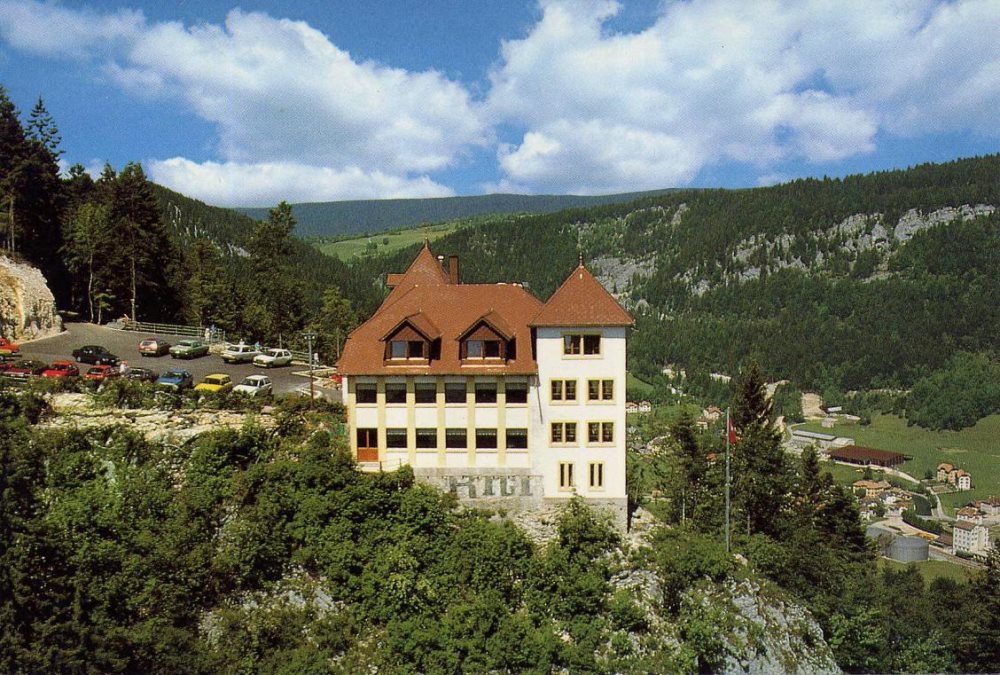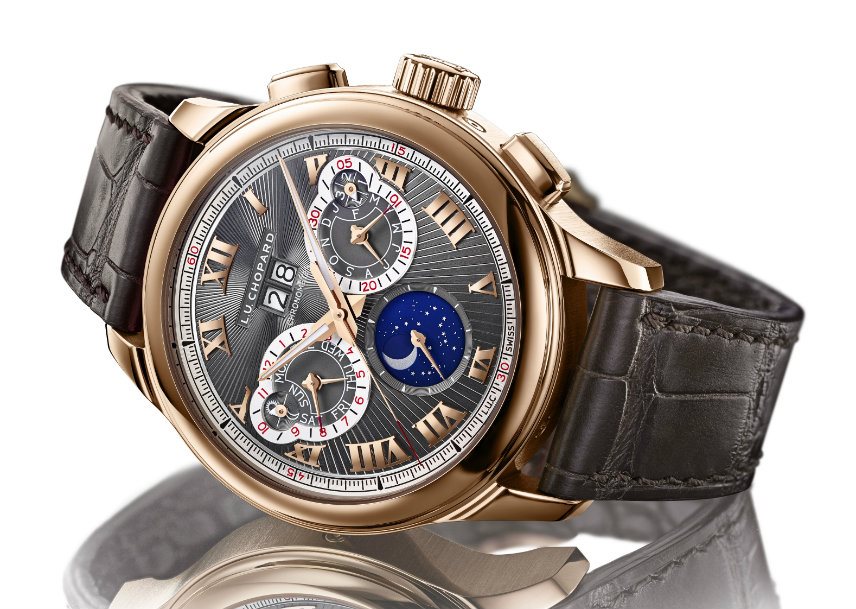The locality of Fleurier is one of the centerpieces of a territory that has been dedicated for nearly three centuries to the Swiss watch industry. Driven by an ancestral tradition and exceptional know-how, the Val-de-Travers, in the Swiss canton of Neuchâtel, has long produced watches and clocks that have been exported to all corners of the planet. Today, the former municipality of Fleurier welcomes the Fleurier Quality Foundation, and delivers a label synonymous with excellence in the world of mechanical watches.
The watchmaking heart of Fleurier
How has the locality of Fleurier, today part of the municipality of Val-de-Travers, in the canton of Neuchâtel, become one of the driving hearts of the Swiss watchmaking history?
Until the eighteenth century, the economy of this rural hamlet is based on agriculture. But in 1730, a young man introduced the watchmaking virus into the flowering organism: at the age of 18, David-Jean-Jacques-Henri Vaucher completed his watchmaking training and returned home, bringing with him all the know-how which will profoundly change the future of his region. Where did he take this training? Who taught him the subtle arts of watchmaking mechanics? Nobody knows. Some evoke an apprenticeship with the great Daniel JeanRichard. Others, more prosaically, refer to a stay in Geneva.
Be that as it may, Vaucher quickly demonstrates his talents: he is able to design and manufacture a watch in its entirety, with all its parts. It then happens to Fleurier what has already happened in Le Locle around JeanRichard: by the sublime expression of his passion, Vaucher draws the attention of the villagers to whom he transmits his techniques, so that in 1750, a fifteen watchmakers already roam the streets of the hamlet. They will be more than a hundred in 1794, among which are three offspring of the great man who founded the Vaucher brothers’ house. At the same time, this development linked to watchmaking is accompanied by a population explosion, doubling the population of Fleurier to 800 souls at the twilight of the eighteenth century.
Nevertheless, watchmaking is nothing more for the inhabitants of Fleurier than a supplementary activity. During the dry agricultural periods, the peasants transform themselves into craftsmen to produce mechanical parts at home, and to provide to the passing merchants something to assemble themselves clocks and clocks. Local production is heterogeneous: timepieces, textiles, wormwood, tobacco, bicycles. This economic diversification will allow Fleurier to escape the violent crises affecting the surrounding communities, dependent on a single activity.
Fleurier’s watchmaking production, however, continues to expand, mainly thanks to the export of its clocks and watches to the Chinese market, starting in 1820, under the leadership of Edouard Bovet. And because a good watchmaker needs tools to measure, the region sees the birth of specialized tool manufacturing companies. So much so that the Val-de-Travers will have up to 20 plants of this kind, scattered between Fleurier and Couvet.
Then comes the time of industrialization, in the late nineteenth century – an earthquake whose epicenter is located in the United States. Fleurier reacts quickly: thanks to the presence of mind of Jules-Samuel Jequier, the mechanized factories quickly take their place in the town, replacing traditional establishments. In the wake of this, Fleurier is experiencing a major demographic growth that forces it to build housing for watchmaking labor as quickly as possible, as well as adequate infrastructure – this will also be the case, on a larger scale, in the towns close to Le Locle and La Chaux-de-Fonds. Soon, part of Fleurier’s urban planning meets the needs of watchmaking production: a checkered neighborhood, an architecture as rational as it is sober, and buildings designed to cope with the demographic challenge.
The current place of watches in Fleurier
The crisis of quartz, in the 70s, misses sweeping the entire Swiss watch industry – and flower production does not escape the tsunami of electronic watches. The number of watchmakers drops from 742 to 160 in just 20 years; the hamlet loses a quarter of its population. Only the house Piaget manages to survive the weather, since the small town of Côte-aux-Fées where it is peacefully installed.
Once the calm returned, the entire local watchmaking industrial body decided to turn to the very high end – a market certainly small, but very buoyant, as will prove the future of world watchmaking. It is also this ambition of renewal that marks the birth of the house Parmigiani Fleurier, whose first creations were launched in 1996, a date that marks the return to business of the flower watch production. Since then, the locality of Fleurier continues to shine on the international scene with its high-end productions, whose presence of the Quality Fleurier label proves more than ever excellence.
Today, 1,500 employees work in the watch industry in Val-de-Travers, 700 of whom work in Fleurier. Major watch brands have their headquarters or production centers there:
- Bovet Fleurier
- Chopard
- Parmigiani Fleurier
- Valfleurier (belonging to the Richemont group)
- Vaucher Manufacture Fleurier
- Voutilainen
- Waeber HMS (needle manufacturer)
Finally, for connoisseurs and amateurs alike, the Musée Régional, which reopened in November 2016 after three years of work, presents many of Val-de-Travers’ watchmaking heritage – clocks, clocks, watches and mechanisms various that tell some three centuries of history.
The Fleurier Quality label
Created in June 2001, inaugurated in 2004, the Fleurier Quality Foundation marks the region’s taste for watchmaking precision and aesthetic beauty. Launched at the initiative of several brands located in Val-de-Travers (Chopard, Bovet Fleurier, Parmigiani Fleurier and Vaucher), the Foundation is an independent organization that delivers a high quality watchmaking certification, the Fleurier Quality stamp.
Any certification with the Foundation requires to meet 5 conditions:
- The manufacture of the watch must be entirely Swiss
- Movement must meet exclusive aesthetic finishing criteria
- The movement must have successfully passed a battery of aging tests
- The movement must first be chronometer certified by the Swiss Official Chronometer Testing Institute
- The watch is tested by a simulator that reproduces the movements of a human carrier, with alternating active and calm phases
The double characteristic of this prestigious organization lies in the attention paid to aesthetics and finishes, and in the fact that its certification is the first to bear on a completed watch, presented in its final packaging and ready to be marketed. Open to all Swiss producers of fine watchmaking, the punch “Quality Fleurier” shows, if necessary, that the radiation of the region in terms of watchmaking is not ready to experience a new phase of shadows.



 Français
Français
